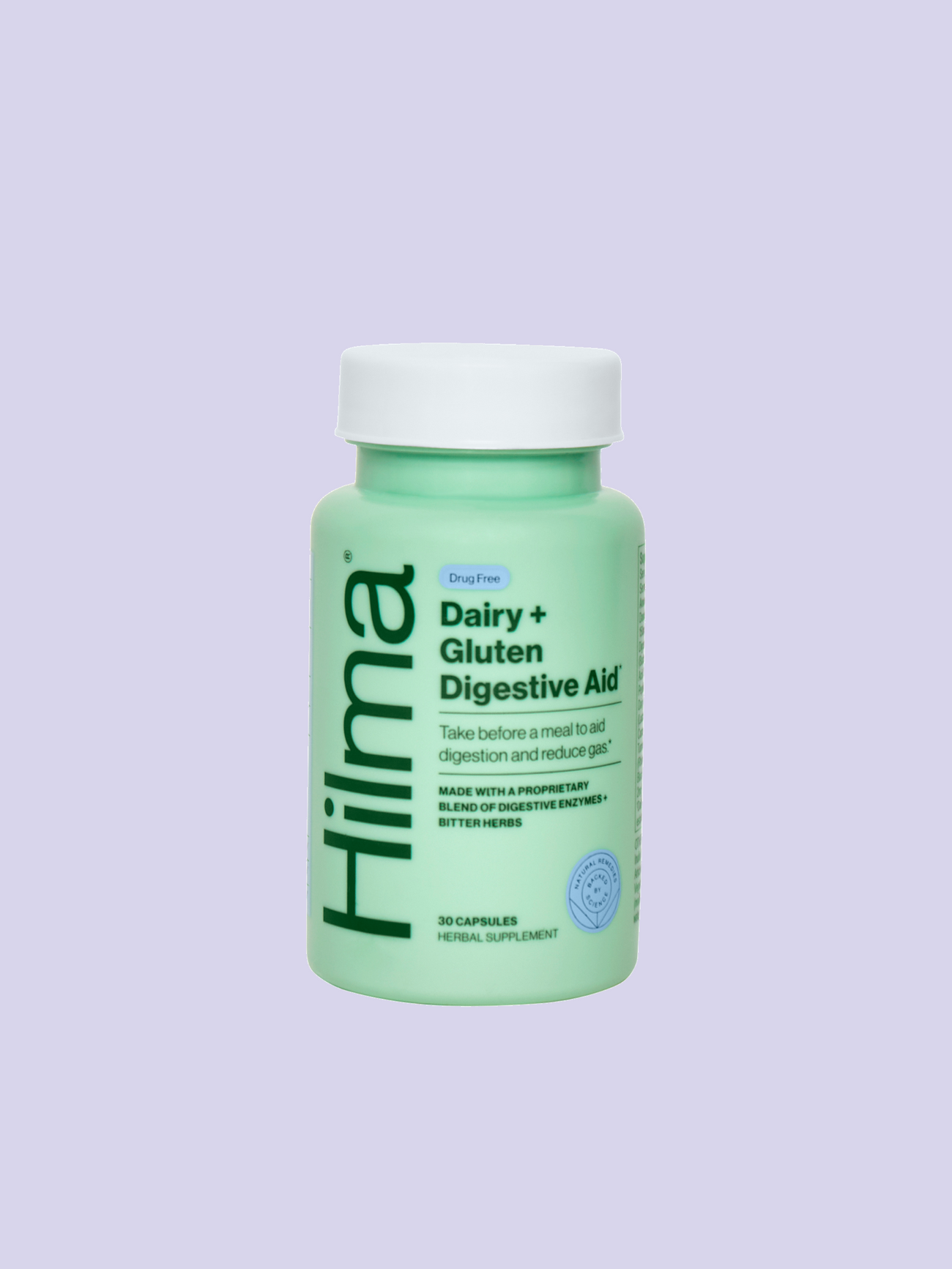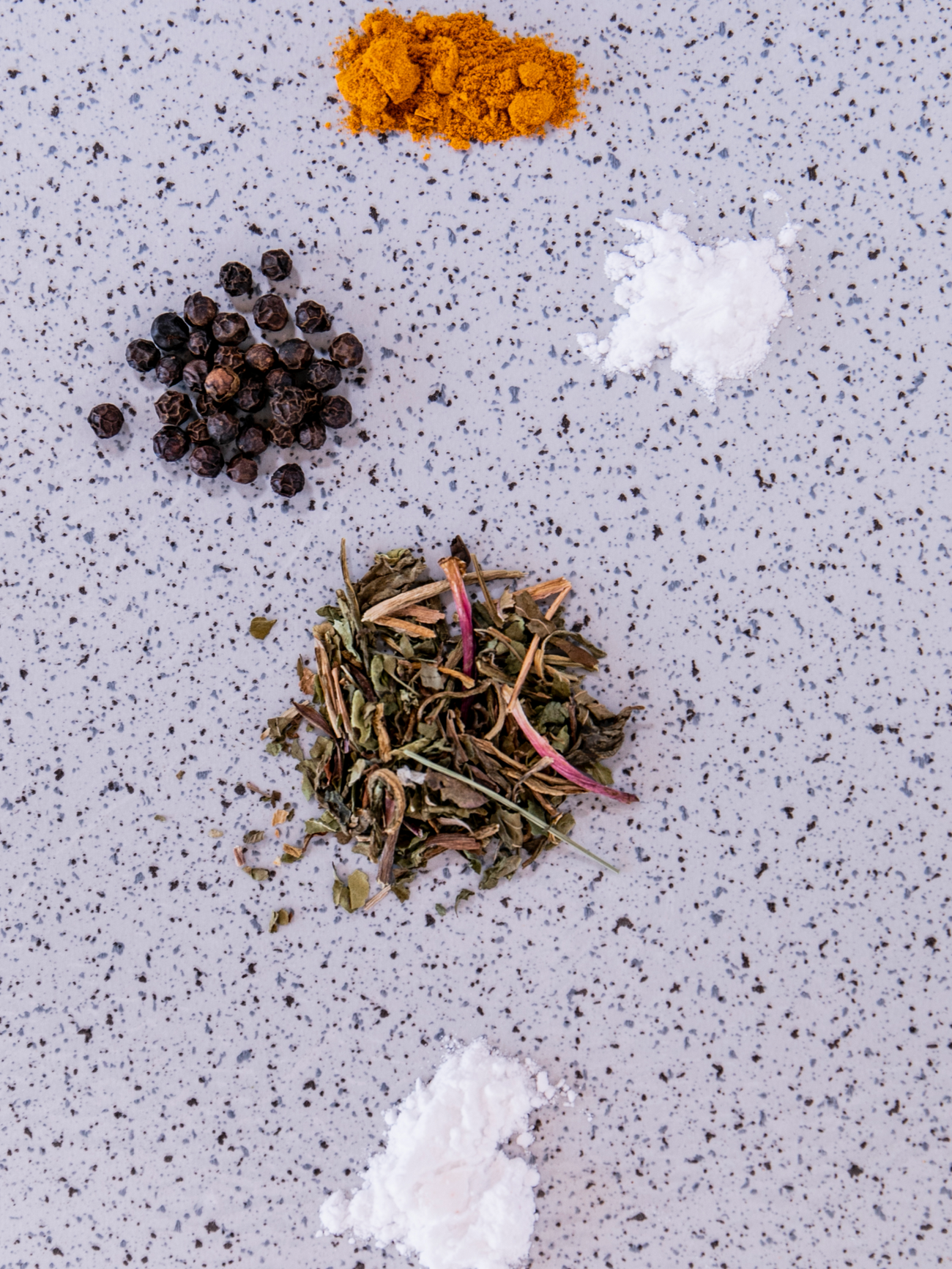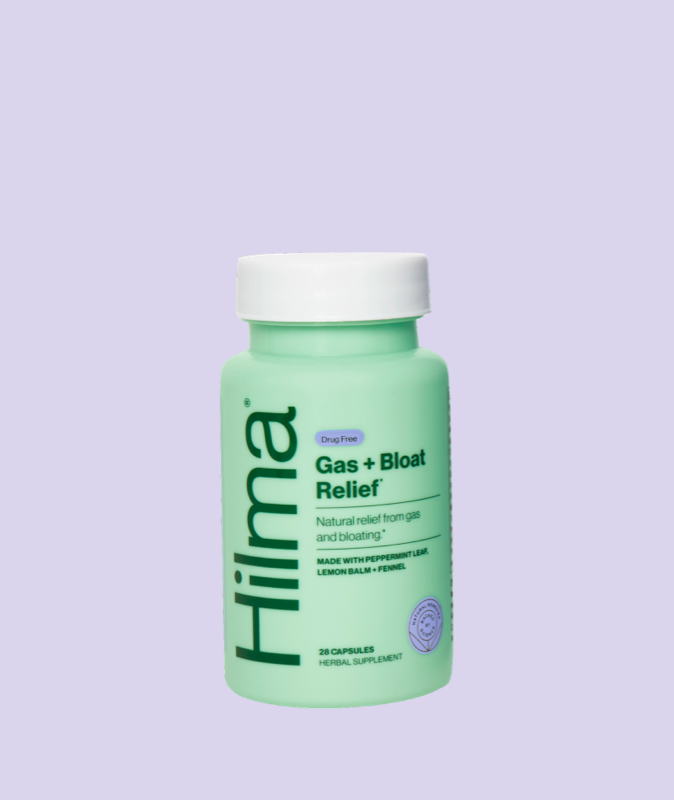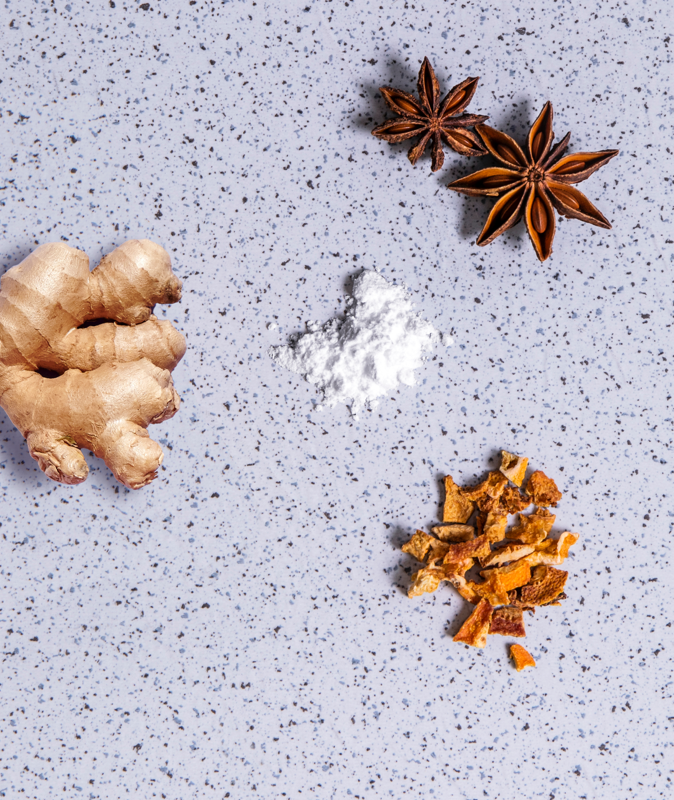
All dairy contains lactose, the “milk sugar.” Lactose is found naturally in the milk of mammals, including cows and goats. The sugar is a disaccharide, meaning it is composed of two simpler sugars: glucose and galactose. For the body to digest lactose, an enzyme called lactase breaks it down into these simpler sugars in the small intestine, allowing them to be absorbed into the bloodstream. Some people have lactose intolerance, where their bodies produce insufficient lactase, making it difficult to digest lactose. This deficiency can lead to symptoms like bloating, gas, and diarrhea after consuming dairy products.
The amount of lactose in different types of dairy products ranges. Below are a handful of dairy products with their listed lactose contents. Of the main dairy categories, milks contain the most lactose, cheeses contain the least, and yogurts fall in between. Typically less lactose is better for dairy-sensitive stomachs!
Cheese
While many joke about consuming a lactase pill in order to enjoy cheese pizza, cheese is actually quite low in lactose comparison to other dairy products. In order for cheese to be made, milk is thickened. This process involves draining the whey (liquid) from the curds (solids). The liquid is higher in lactose than the solids, which therefore, reduces the lactose remaining. Hard cheeses tend to have less than 1 gram of lactose per 1 oz. serving while softer cheeses can include up to 4 grams.
- In a 1 oz. serving:
- Harder cheese:
- Parmesan cheese contains <0.001 g.
- Swiss cheese contains 0.02 g.
- Cheddar cheese contains 0.07 g.
- Softer cheeses:
- Goat cheese contains 0.7 g.
- American cheese contains 1-4 g.
- Ricotta cheese contains 1.5 g.
Cream Cheese
Cream cheese is a soft, mild tasting, fresh cheese made from milk and cream. Unlike aged cheeses like cheddar or Parmesan, cream cheese is not aged, which gives it its soft, spreadable consistency. It is commonly used as a spread for bagels, in cheesecakes, and in various dips and frostings.
- In a 1 ounce serving:
- Cream cheese contains 1 g.
Yogurt
As a probiotic, yogurt contains bacteria. These bacteria contain lactase, the enzyme that can break down lactose. Therefore, the bacteria in yogurt help reduce the lactose content. Different types of yogurts contain different amounts of lactose. In a six ounce serving, Greek yogurt contains 2 fewer grams than plain whole-fat yogurt. Greek yogurt is a thicker variety of yogurt that has been strained to remove liquid whey, similar to the process of making cheese. These straining results in higher protein and lower lactose. In other forms of yogurt, bacteria cultures are added to pasteurized milk, which is then fermented. The longer the fermentation, the tangier the yogurt will become.
- In a 6 ounce serving:
- Greek yogurt contains 8-9 g.
- Non-fat yogurt contains 13-17 g.
- Whole-fat yogurt contains 10-12 g.
Kefir
A fermented milk drink made by adding kefir “grains” to milk. These grains are not actual grains, but rather a combination of beneficial bacteria and yeast embedded in a matrix of proteins, lipids and sugars. The process is similar to making yogurt, but the end product is thinner in consistency. Kefir is also fermented for longer than yogurt and contains 12 live and active probiotic cultures and 25-30 billion CFUs compared to yogurt’s 2-6 live and active cultures and 6 billion CFUs. CFUs are colony forming units, which estimate the number of microbial cells in a sample.
- In a 1-cup serving:
- Kefir contains 3-8 g. (big range depending on the brand)
Milk
-
At 12 grams of lactose in 1 cup of whole milk, milks typically contain the most lactose of all dairy products. Milk production does not involve removal of liquid, as is essential in cheese and yogurt production. However, the production of lower fat milks requires removal of some of the curds, which leads to a greater lactose content. Whole milk contains all of its natural fat content (about 3.25%), low-fat milk contains usually 1% or 2%, and skim milk has most or all of the fat removed (less than 0.5% fat). Goat milk contains less lactose in a serving than cow milk because goat milk is slightly higher in fat (3.5-4.0%).
- In a 1 cup serving:
- Goat milk contains 9-11 g.
- Regular milk contains 12 g.
- Low-fat milk contains 13 g.
Cream
Dairy cream is the rich, fatty portion of milk that rises to the top when fresh milk is left to stand. When fresh, raw milk is left undisturbed, the fat molecules (cream) naturally rise to the top because fat is less dense than the rest of the milk. This cream can be skimmed off by hand, resulting in cream and skimmed milk underneath. In modern large-scale dairy farming, a more efficient method is used, involving a machine called a cream separator. Heavy cream (heavy whipping cream) contains around 36-40% fat. It is rich and ideal for whipping, making sauces, or adding to coffee. Light cream contains around 18-30% fat, often used in coffee or for light cooking. And lastly, half-and-half is a blend of cream and milk with around 10-12% fat. It is not thick enough to whip but is used in coffee or as a light cream for recipes.
- In a 1-ounce serving:
- Heavy cream contains 0.5 g.
- Light cream contains 0.6-1 g.
- Half-and-half contains 0.9 g.
Sour Cream
Sour cream is a fermented dairy product with a unique tangy flavor and thick texture. Sour cream is commonly added as a condiment on baked potatoes and for enriching sauces or dips. Sour cream’s production is similar to yogurt however it differs in a few key ingredients and bacterial cultures. Sour cream begins with dairy cream while yogurt begins with dairy milk. And the bacteria cultures added to the cream are those that specifically produce lactic acid (e.g. Lactococcus lactis). As the bacteria ferment the lactose into lactic acid, they lower the pH of the cream, causing it to thicken. The fermentation explains sour cream’s low lactose content.
- In a 1-ounce serving:
- Sour cream contains 1-2 g.
Butter
Butter is a dairy product made by churning cream or milk to separate the butterfat from the liquid (known as buttermilk). The process involves agitating the cream until the fat globules clump together, forming a solid mass. Butter is primarily composed of fat, with small amounts of water and milk proteins. Ghee is butter that has had the water and milk solids removed, leaving pure butterfat. The removal of the water and milk solids explains ghee’s higher smoke point, longer shelf life, and lower lactose content than other forms of butter.
- In a 1-tablespoon serving:
- Regular butter contains 0.1 g.
- Ghee contains <0.001 (considered to be almost zero)
Ice Cream and Other Frozen Dairy Desserts
Arguably one of the tastiest ways to enjoy dairy is ice cream and gelato. Ice cream is a frozen dessert made from milk, cream, sugar, and additional flavorings. The ingredients are frozen while being blended to incorporate air to create a smooth, creamy texture. Some commercial products add additional emulsifiers, like egg yolks, to maintain the smooth texture and prevent ice crystals from forming. French-style ice cream is typically custard-based, which means that egg yolks are included in the mixture. Gelato is similar to ice cream but is made with more milk instead of cream. And lastly, sherbet is made with a fruit puree base and a small amount of dairy.
- In a ½ cup serving:
- Sherbet contains 1-5 g.
- Gelato contains 4-6 g.
- Ice cream contains 6-9 g.
Whey
Most people are familiar with whey as a protein powder. Whey is actually the liquid that remains after milk has been curdled and strained in the cheese-making process. And then that liquid is dried to be used in protein supplements. Many athletes select whey protein powders because whey is a rich source of all three branched chain amino acids (BCAAs). These amino acids hold a key role in muscle development due to their branching structure. The three BCAAs a leucine, isoleucine, and valine. And all three are essential amino acids especially important for muscle growth and maintenance. Essential means that we require consumption of them from our diet because our body cannot build them themselves.
- In a 1 scoop serving (30 grams)
- Whey protein concentrate contains 1-3 g.
- Whey protein isolate contains <1 g.

This information is for educational purposes only and should not be taken as medical advice. Please consult a physician before treating any disorder.





